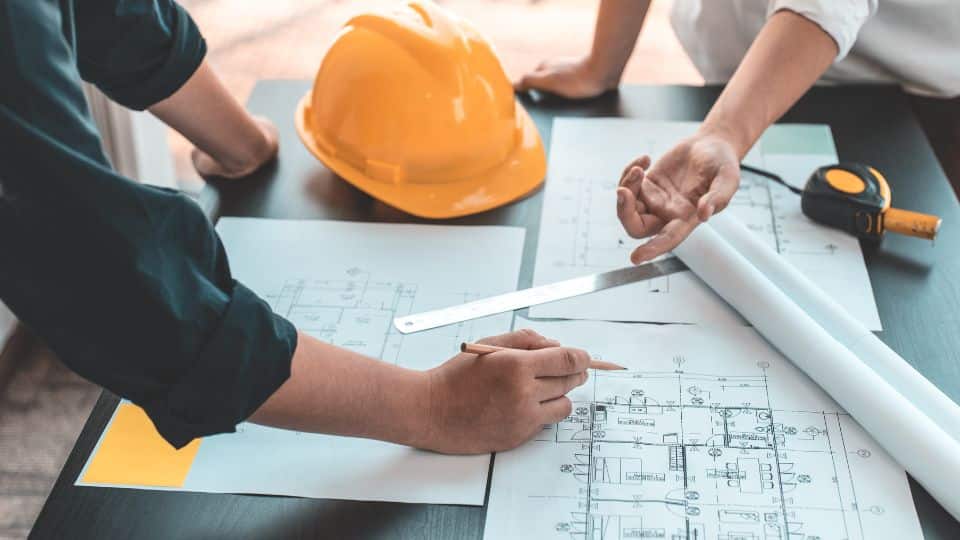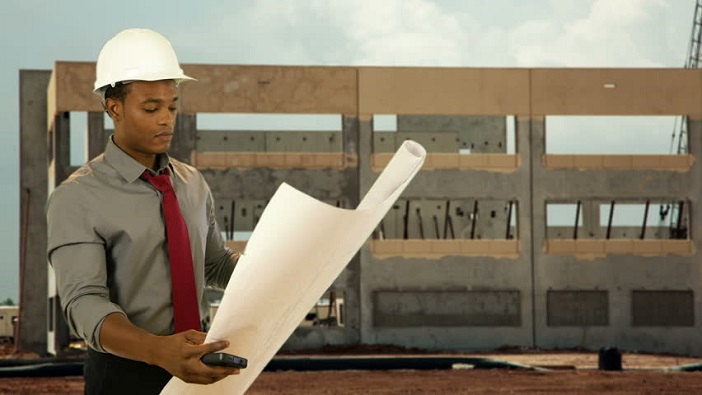The Function of Sustainability and Innovation in Modern Architect Practices
Sustainability and innovation are reshaping modern style in methods you could not expect. By welcoming smart advancements and eco-friendly products, engineers are not just developing buildings; they're crafting settings that improve our quality of life.
The Value of Lasting Architecture
Sustainable design is important not simply for the atmosphere but likewise for boosting our top quality of life. When you welcome lasting design, you're not simply reducing your carbon footprint; you're creating spaces that promote health and well-being.
Furthermore, sustainable architecture typically brings about more powerful areas. When structures are created with green practices, they can motivate others to do the same, cultivating a society of sustainability. You'll discover enhanced residential property values and a greater sense of pride in your surroundings.
Last but not least, by focusing on sustainability, you're buying the future. You're guaranteeing that future generations take pleasure in a healthier planet and vivid areas. So, when you consider your following project, think of how sustainable style can raise your life and those around you.
Ingenious Materials Changing Building Practices
As you explore cutting-edge materials in style, you'll locate that biodegradable construction materials are reshaping how we think of sustainability. Recycled material innovations are giving brand-new life to waste, while clever material modern technologies enhance constructing efficiency. These advancements not just advertise eco-friendliness but also push the limits of layout.
Naturally Degradable Building Products
While traditional building and construction materials frequently add to environmental deterioration, biodegradable building products are becoming a viable choice that transforms building techniques. You can explore choices like mycelium, hempcrete, and bamboo, which not only minimize waste yet also promote sustainability. These products damage down normally at the end of their lifecycle, reducing garbage dump payments. By incorporating naturally degradable alternatives right into your designs, you're not just improving visual charm; you're additionally making a favorable influence on the planet. Plus, they usually require less energy to generate, further lowering your project's carbon footprint. As you adapt to these ingenious materials, you'll discover that they use toughness and convenience, allowing you to develop frameworks that straighten with modern values of sustainability and obligation.
Recycled Material Technologies
In the last few years, ingenious materials with high recycled web content have reinvented building techniques, using designers interesting brand-new choices - Architect. You can now include products like recycled steel, which not only lowers waste however likewise flaunts excellent toughness. Recycled glass is an additional fantastic choice, offering aesthetic charm while minimizing ecological impact

Smart Product Technologies
Smart material technologies are reshaping the means you think of developing practices, using vibrant remedies that adapt to altering conditions. These cutting-edge products, such as self-healing concrete and thermochromic glass, improve building efficiency and sustainability. When damaged-- these improvements are no much longer simply ideas, picture structures that can change to temperature level adjustments or repair themselves. By integrating smart materials, you can develop energy-efficient designs that reply to their environment, decreasing overall power intake. The capability to keep track of and adapt in real-time streamlines upkeep and lengthens the life-span of buildings. As you embrace these innovations, you're not simply innovating; you're adding to a much more lasting future in architecture, combining capability with ecological duty.
The Integration of Smart Technologies in Style
As innovation evolves, incorporating clever solutions into architectural style becomes essential for developing effective and lasting areas. You can integrate clever modern technologies like constructing monitoring systems, which optimize power use and boost owner convenience. Sensors can check environmental conditions, changing illumination and temperature level immediately based upon real-time data. This flexibility not just boosts customer experience yet also lowers power consumption.
Incorporating Net of Points (IoT) tools permits seamless communication amongst various building systems, allowing you to make data-driven decisions that improve performance. Smart materials that react to environmental changes can better enhance your style, giving dynamic services to ever-changing conditions.
Power Effectiveness and Renewable Power Solutions
While many engineers concentrate on aesthetics, prioritizing energy performance and renewable resource solutions is necessary for sustainable layout. You can begin by including passive solar design, which optimizes all-natural light and warmth, minimizing reliance on man-made lighting and furnace. Utilize high-performance insulation and energy-efficient windows to lessen energy loss.
Do not neglect regarding renewable power systems-- install solar panels or wind turbines to generate tidy power on-site. You can likewise think about including geothermal heating and cooling systems for a more lasting temperature level regulation.
By choosing energy-efficient appliances and illumination, you'll not just decrease energy intake but additionally reduced operational prices for constructing residents.
Including these principles into your designs not just benefits the setting however also enhances the building's charm and worth. Ultimately, your here commitment to power efficiency and eco-friendly energy will establish your jobs apart in a competitive market.
Water Conservation Approaches in Modern Architecture
Including water preservation techniques into modern architecture read more is essential for producing sustainable structures that lessen ecological effect. You can attain this by integrating rain harvesting systems, which accumulate and store rain for watering and non-potable uses. Executing low-flow fixtures and smart irrigation systems also decreases water usage, ensuring reliable usage throughout the structure.
Consider utilizing drought-resistant landscaping, which needs much less water and promotes biodiversity. Incorporating permeable paving materials allows rainwater to infiltrate the ground, decreasing runoff and reenergizing groundwater products.
Furthermore, installing greywater recycling systems can repurpose water from sinks and showers for bathroom flushing or irrigation, additional conserving resources.
The Influence of Biophilic Design on Well-Being
Biophilic design brings nature indoors, and you'll discover its favorable effects on your wellness and happiness. By boosting interior air top quality and attaching you with natural environments, these spaces can transform your day-to-day experience. Allow's discover just how integrating these attributes can boost your general health.
Nature's Impact on Wellness
When you integrate components of nature right into your surroundings, it can significantly enhance your physical and psychological wellness. Biophilic style, which stresses natural light, plants, and organic products, promotes a sense of connection to the outdoors. Embracing biophilic style is a step towards a healthier way of life.
Enhancing Indoor Air Top Quality
While several people focus on aesthetics and performance in style, enhancing indoor air high quality plays a necessary duty in your overall health. By integrating biophilic design elements, you can improve air top quality naturally. Prioritizing these facets in your design will certainly not just elevate your area but also advertise a sense of calm and health.
Link With Natural Environments
When you get in touch with natural environments in your room, you not only enhance its visual allure yet also considerably improve your health. Biophilic design motivates you Architect to integrate features like plants, all-natural light, and organic products. These aspects create a relaxing atmosphere, minimizing tension and anxiety. Study shows that being around nature can enhance your state of mind and cognitive function, aiding you feel a lot more efficient and focused. When you invite the outdoors inside, you might see far better air high quality and enhanced comfort. Simple changes, like including a living wall surface or big home windows, can greatly impact your experience (Architect). Ultimately, integrating nature into your atmosphere leads you to a much healthier, better way of living, cultivating a much deeper link to the world around you.
Future Fads in Sustainable Building Practices
As the globe faces pushing ecological difficulties, designers are increasingly welcoming ingenious approaches to sustainability that redefine how we layout and build. You'll see a rise in biophilic style, incorporating nature right into metropolitan areas to enhance wellness and lower energy usage. Smart technologies, like AI and IoT, are improving energy monitoring in structures, enhancing source usage, and decreasing waste.
Moreover, modular construction is gaining traction, permitting quicker, more reliable structure processes while reducing ecological influence. Using sustainable products, such as redeemed timber and recycled steels, is becoming standard technique. As you discover these fads, anticipate a shift towards circular design, highlighting the lifecycle of materials and promoting reuse and recycling.
These forward-thinking strategies not only address eco-friendly concerns however additionally create healthier, more resistant areas. By staying educated concerning these trends, you can assist form a lasting future in architecture.
Regularly Asked Inquiries
How Can Sustainability Affect Task Spending Plans and costs?
Sustainability can considerably affect project expenses and spending plans. You might find that first financial investments in green products or modern technologies cause lasting savings via power effectiveness, reduced waste, and potential government rewards, eventually balancing the overall expenditures.
What Accreditations Exist for Sustainable Style?
You'll discover numerous qualifications for lasting architecture, consisting of LEED, BREEAM, and the Living Building Obstacle. These certifications help you demonstrate your dedication to sustainability and can boost your job's reputation and allure to customers.
Exactly How Does Local Society Influence Sustainable Design?
Neighborhood society forms lasting style by reflecting neighborhood worths, materials, and customs. You'll discover that incorporating local appearances and practices not just respects heritage but also boosts the capability and acceptance of your building tasks.
What Function Does Client Education Play in Sustainable Practices?
Customer education and learning's essential for promoting sustainable practices. When you inform customers concerning benefits, prices, and environmental impacts, you empower them to make educated decisions, cultivating a collaborative approach that boosts the job's overall sustainability.

Exactly How Can Architects Determine the Success of Sustainability Campaigns?
You can measure the success of sustainability initiatives by tracking energy consumption, evaluating material efficiency, and gathering feedback from customers. Regular audits and comparisons against criteria will certainly assist you fine-tune your strategies and showcase enhancements efficiently.
By integrating clever materials, you can develop energy-efficient styles that respond to their environment, lowering overall power intake.While several engineers focus on aesthetics, focusing on energy effectiveness and sustainable energy options is crucial for lasting design. Biophilic style, which highlights all-natural light, plants, and organic products, promotes a feeling of connection to the outdoors. Biophilic style motivates you to incorporate features like plants, natural light, and organic materials. As you discover these trends, expect a change towards circular design, emphasizing the lifecycle of products and promoting reuse and recycling.